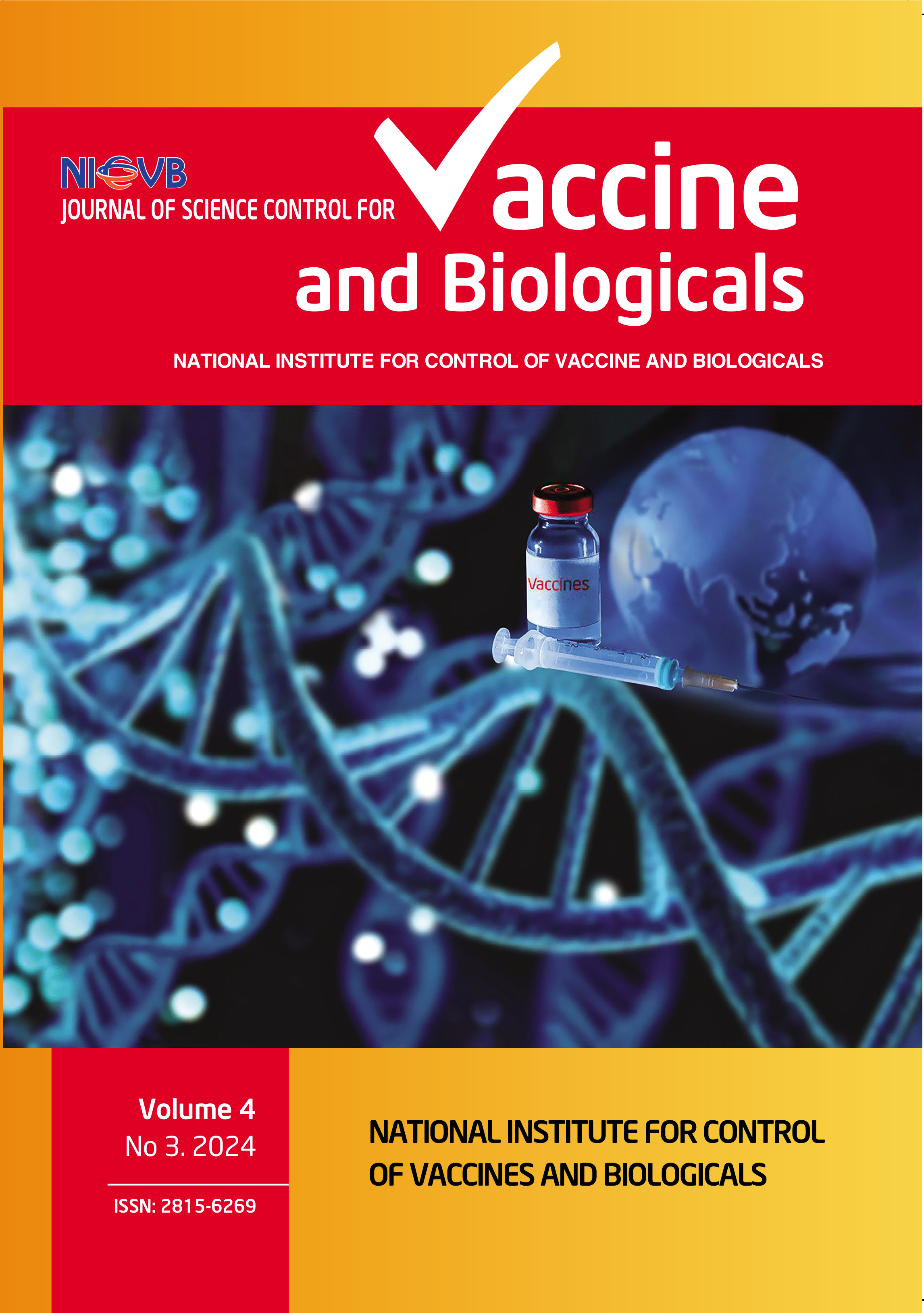VALIDITY AND RELIABILITY OF THE SHSQ-25 FOR ASSESSING SUBOPTIMAL HEALTH STATUS AMONG HANOI MEDICAL UNIVERSITY STUDENTS
DOI:
https://doi.org/10.56086/jcvb.v4i3.176Tóm tắt
The Suboptimal Health Status Questionnaire (SHSQ-25) has been validated in different languages, such as Chinese and other Asian countries. This study, conducted in 2023, aims to examine the validity and reliability of the Vietnamese version of SHSQ-25 using data from 353 undergraduate students at Hanoi Medical University. Reliability was evaluated through test-retest reliability using the Intraclass Correlation Coefficient (ICC) and internal consistency using Cronbach’s alpha. The subscales for fatigue, mental status, cardiovascular, and digestive symptoms demonstrated good test-retest reliability, with ICC values ranging from 0.416 to 0.703, and high internal consistency, with Cronbach's \(\alpha\) ranging from 0.81 to 0.90. However, the immune system subscale exhibited lower reliability, with an ICC of 0.276 and a Cronbach’s \(\alpha\) of 0.53, indicating less consistency between measurements. Validity was assessed through Exploratory Factor Analysis (EFA), which was performed to determine the underlying structure of the Vietnamese version, and Confirmatory Factor Analysis (CFA), which was used to further assess its fit to the data. EFA results revealed a new 5-factor structure. CFA supported the 5-factor model, but findings indicated that further refinement of the SHSQ-25 may be warranted to optimize its factor structure and item composition.
Tài liệu tham khảo
WHO. (1946). Preamble to the Constitution of the World Health Organization as adopted by the International Health Conference. Official Records of the World Health Organization. 2:100
Ruggeri K, Garcia-Garzon E, Maguire Á, et al. (2020). Well-being is more than happiness and life satisfaction: a multidimensional analysis of 21 countries. Health Qual Life Outcomes 18, 192.
Wang W, Yan Y, Guo Z, et al. (2021). All around suboptimal health — a joint position paper of the Suboptimal Health Study Consortium and European Association for Predictive, Preventive and Personalised Medicine. EPMA Journal 12, 403–433. https://doi.org/10.1007/s13167-021-00253-2
Zhou LM, Shi Y. (2019). Association of Suboptimal Health Status with Psychosocial Stress, Plasma Cortisol and mRNA Expression of Glucocorticoid Receptor α/β in Lymphocytes. Stress, 22(6), 697-706. doi: 10.1080/10253890.2019.1628145
Hu F, Wang W. (2023). Suboptimal Health Innovation: From Bench to Bedside. In: Pod-Bielska, H., Kapalla, M. (eds) Predictive, Preventive, and Personalised Medicine: From Bench to Bedside. Advances in Predictive, Preventive and Personalised Medicine, vol 17. Springer, Cham. https://doi.org/10.1007/978-3-031-34884-6_2
Yan YX, Liu YQ, Li M, et al. (2009). Development and Evaluation of a Questionnaire for Measuring Suboptimal Health Status in Urban Chinese. J Epidemiol. 19(6):333–41.
Wang W, Yan Y. (2012). Suboptimal health: a new health dimension for translational medicine. Clinical and Translational Medicine. doi: 10.1186/2001-1326-1-28
Adua E, Afrifa-Yamoah E, Frimpong K, et al. (2021). Construct validity of the Suboptimal Health Status Questionnaire-25 in a Ghanaian population. Health Qual Life Outcomes. 19(1):180. doi: 10.1186/s12955-021-01810-z.
Guo Z, Meng R, Zheng Y, et al. (2022). Translation and cross-cultural validation of a precision health tool, the Suboptimal Health Status Questionnaire-25, in Korean. J Glob Health. 12:04077. doi: 10.7189/jogh.12.04077.
Duong, Thi & Thien, Phuoc & Huong, Lam. (2022). Characteristics according to traditional medicine in suboptimal health status and some related factors among medical students in University of Medicine and Pharmacy, Hue University. Journal of Medicine and Pharmacy. 59-66.
Anthoine E, Moret L, Regnault A, et al. (2014). Sample size used to validate a scale: a review of publications on newly-developed patient reported outcomes measures. Health Qual Life Outcomes. 12(1):2. doi:10.1186/s12955-014-0176-2
Gunawan J, Marzilli C, Aungsuroch Y. (2021). Establishing appropriate sample size for developing and validating a questionnaire in nursing research. Belitung Nurs J. 7(5):356-360. doi:10.33546/bnj.1927







